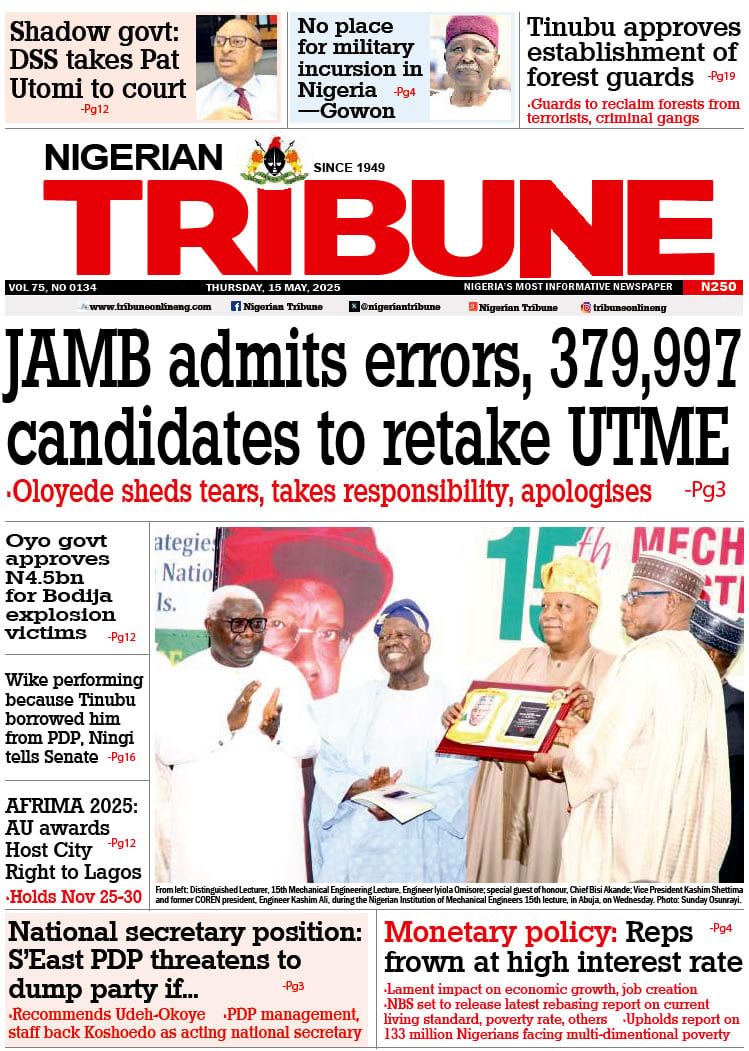THE position of the female gender has been defined distinctively over centuries of civilisation across the globe. The myth in some societies about women being too weak physically and mentally to study science-related fields has held back many women from exploring the world of Science, Technology, Engineering and Mathematics (STEM). In addition, these misconceptions and biases passed on from one generation to the next are catalyzed by parents preventing or discouraging their children and wards from going for the scientific field even if they are steaming with passion, hence the gap between what is happening and what should be in women’s STEM space, which can be bridged by gender equality and equity. Moreover, governmental and non-governmental organisations, both locally and internationally, are now torch bearers of girl-child education and advocates of women going into the world of health and related fields. This has contributed hugely to the development of nations globally. This is validated by the global GDP of 5 per cent contributed by women in health.
Currently, females who are in the world of research are less than 30 per cent and coincidentally, UNESCO revealed that only approximately 30 per cent of all female students choose fields related to STEM in tertiary institutions. Furthermore, as the unemployment rate of the world steadily increases, the empowerment of women grows in importance and this becomes feasible when more women work in STEM and STEM-related fields. The Pew Research Center stated that the salary of a STEM worker is 66.67 per cent higher than their counterparts in other fields. This should bridge the gap of poverty as well and the complications associated with poverty in our societies to a large extent.According to data from the United States Census Bureau in 2018, averagely, men in STEM earn 19 per cent more than women in STEM. Many women in STEM have experiences, majority of which are discouraging. These include the salary gap and leadership positions being dominated by men, but it is believed that if the ratio of the girl-children studying the sciences increases, all the gender gaps will be narrowed to a minimum in a few years time and erased in decades to come.
The responsibility of world citizens to increase the percentage of women in the field of science will be lighter if handled with mental dexterity and optimism. Annually, the same questions are being asked in conference rooms, workshops, virtual meetings among others on what can be done to change the statistics to the positive meridian. Simply, continuous exposure of the girl-child from childhood to early adulthood should be welcomed, women need to be mentored by one or more women in STEM who they choose or are chosen for them by either their family, socio-cultural, religious or academic institutions. In addition, increased advocacy at all levels to erase stereotypes and negative cultural norms should be done more often. More scholarships, paid internships and incentives should be given by philantropists, religious bodies, cultural societies, governmental and non-governmental organisations to the female child in STEM.
Lastly, policies that have to do with gender equality should be strengthened and more avenue should be created for one to one interaction with Icons in STEM such as picnics, events and workshops. In conclusion, the female gender makes a good percentage of the world’s population and if their potentials are not maximised, it will indeed be a great loss to the human race. Women in the world of science should leave the legacy of passing the baton to more women who are climbing the ladder, thereby changing the narrative of “ the higher you go in STEM, the fewer the women”. Putting a stop to all manner of discrimination against the female gender is a basic human right. We believe more women in STEM will make the Sustainable Development goals achievable within a shorter period, thereby creating a better world for all.
- Azeezat writes in via afprish22@gmail.com
YOU SHOULD NOT MISS THESE HEADLINES FROM NIGERIAN TRIBUNE
We Have Not Had Water Supply In Months ― Abeokuta Residents
In spite of the huge investment in the water sector by the government and international organisations, water scarcity has grown to become a perennial nightmare for residents of Abeokuta, the Ogun State capital. This report x-rays the lives and experiences of residents in getting clean, potable and affordable water amidst the surge of COVID-19 cases in the state…
Selfies, video calls and Chinese documentaries: The things you’ll meet onboard Lagos-Ibadan train
The Lagos-Ibadan railway was inaugurated recently for a full paid operation by the Nigerian Railway Corporation after about a year of free test-run. Our reporter joined the train to and fro Lagos from Ibadan and tells his experience in this report…






